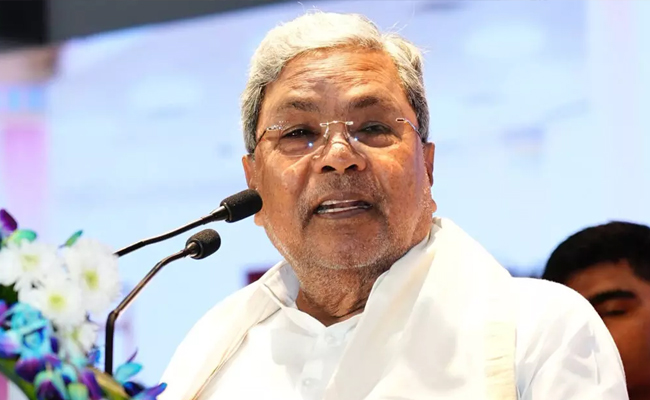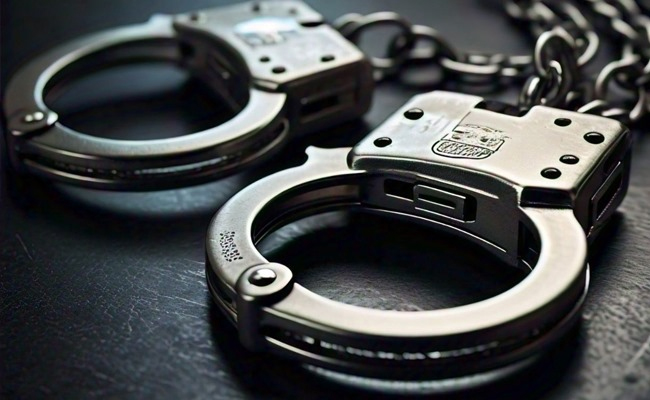San Francisco: Elon Musk may want to send “tweet” back to the birds, but the ubiquitous term for posting on the site he now calls X is here to stay — at least for now.
For one, the word is still plastered all over the site formerly known as Twitter. Write a post, you still need to press a blue button that says “tweet” to publish it. To repost it, you still tap “retweet.”
But it's more than that.
With “tweets,” Twitter accomplished in just a few years something few companies have done in a lifetime: It became a verb and implanted itself into the lexicon of America and the world. Upending that takes more than a top-down declaration, even if it is from the owner of Twitter-turned-X, who also happens to be one of the world's richest men.
“Language has always come from the people that use it on a day-to-day basis. And it can’t be controlled, it can’t be created, it can’t be morphed. You don’t get to decide it,” said Nick Bilton, the author of “Hatching Twitter: A True Story of Money, Power, Friendship, and Betrayal” about Twitter’s origins.
Twitter didn't start out as Twitter. It was “twttr” — without vowels, which was the trend in 2006 when the platform launched and SMS texting was wildly popular. The iPhone only came out in 2007.
Twitter co-founder Evan Williams "went one day and purchased the vowels, two vowels for essentially $7,500 each,” when he bought the URL for twitter.com from a bird enthusiast, Bilton said.
At the beginning, people didn't “tweet” — it was "I'm going to twitter this," Bilton recalled. But “twittered” doesn't roll off the tongue and “tweet” soon took over, first in the Twitter office, then San Francisco, then everywhere.
We've been tweeting for well over a decade. World leaders, celebrities and athletes, dissidents in repressive regimes, propaganda trolls, sex workers and religious icons, meme queens and actual queens. Former president Donald Trump's incendiary use of the bird app quickly punted “tweet” into near-constant headlines during his presidency. People who never signed up for Twitter knew what the word meant.
For now, we still tweet, retweet and quote tweet, and sometimes — perhaps not often enough — delete tweets. News sites embed tweets in their stories and TV programs scroll them. No other social network has a word for posting that’s entered the vernacular like “tweet” — though Google did the same for “googling."
The Oxford English Dictionary added “tweet” in 2011. Merriam-Webster followed in 2013. The Associated Press Stylebook entered it in 2010.
“Getting into the dictionary is an indication that people are already using it,” said Jack Lynch, a Rutgers University English professor who studies the history of language. “Dictionaries are usually pretty tentative or cautious about letting new words in, especially for new phenomena, because they don’t want things to be just a flash in the pan.”
As Twitter grew into a global communications platform and struggled with misinformation, trolls and hate speech, its friendly brand image remained. The bluebird icon evokes a smile, like the Amazon up-turned-arrow smile — in contrast to the X that Musk has imposed.
Martin Grasser was two years out of art school when Twitter hired him for the logo redesign in 2011. His wasn’t the first bird logo for Twitter, but it would be the most enduring.
“They knew they wanted a bird. So we weren’t starting completely over, but they wanted it to be on par with Apple and Nike. That was really brief,” he said.
Twitter launched Grasser's design in May 2012; the company went public on Wall Street later that year.
One early in-house design shown to Grasser looked like “a flying goose with a tail. It looked kind of like a dragon. It was crazy,” he said. Jack Dorsey, another co-founder (and twice-CEO) wanted something simpler.
The bird represented a vision of Twitter as a friendly place “where everyone can weigh in and chat,” Grasser said.
“The round form evokes a sense of optimism, the bird even being sort of turned upward, as corny as that sounds, I think is different than a bird flying down or flat," he said. "We wanted to give it this idea of like soaring.″
The word “Twitter” itself is playful, as is “tweet.” This was no accident, Bilton said.
Other names that floated as the platform started out included “Status” and “Friend Stalker.”
It was Noah Glass, another co-founder who never quite got the credit he deserved for his role in hatching Twitter, who had the winning idea.
Glass, Bilton said, “had been thinking about like heartbeats and emotions. He was going through a divorce and he literally went through the dictionary word by word until he came across the word twitter. And he just knew instantly that was it.”
“He was one of the four founders who had the emotional intelligence to be able to understand that this was about connecting with humans,” Bilton said. “It was inviting, it was emotional. It was about connecting with humans and your friends and your loved ones.”
Musk began his quest erasing Twitter's corporate culture and image in favor of his own vision as soon as he took over the company in October 2022. He lost three-quarters of the company's staff through firings, layoffs and voluntary departures, auctioned off furniture and décor, and upended policies on hate speech and misinformation. The rebranding to X was no surprise.
Twitter’s rebranding is rooted in ambition that Musk began to pursue nearly a quarter century ago after he sold his first startup, Zip2, to Compaq Computer. He set out to create a one-stop digital shop for finance called X.com — an “everything” service that would provide bank accounts, process payments, make loans and handle investments.
He has not given up on the dream. Twitter is now X, falling in line with Musk’s other X-named brands, SpaceX and Tesla’s Model X. Not to mention his young son, whom he calls “X.”
His goal for X is to turn it into an “everything” app — for video, photos, messaging, payments and other services, although he has given few details. For now, X.com is still, essentially Twitter.com, even as the bluebird and other playful tidbits start to disappear.
“There used to be a saying inside Twitter that Twitter was the company that couldn’t kill itself. I think that still rings true, whether it’s called Twitter or X,” Bilton said.
“I think that it’s kind of become a fabric of society. And even Elon Musk may not be able to break it.”
Let the Truth be known. If you read VB and like VB, please be a VB Supporter and Help us deliver the Truth to one and all.
New Delhi: Chief Minister Siddaramaiah on Sunday asserted that fascism would not be allowed to enter India “through the back door of vote rigging” and called upon citizens to collectively defend the country’s democratic foundations.
Speaking after participating in an anti–vote rigging protest organised in New Delhi, Siddaramaiah said the gathering was not merely a political demonstration but a stand to protect Indian democracy. “We have come to the heart of our republic not as Congress workers or voters, but as protectors of Indian democracy,” he said.
Emphasising the importance of the right to vote, Siddaramaiah said it was the most sacred right guaranteed by the Constitution and the very foundation of democracy.
“Through voting, a farmer shapes the future of his children, a worker safeguards his dignity, a youth realises dreams, and a nation expresses its collective will,” he said.
He accused the BJP-led Union government of attempting to undermine this right through what he termed systematic vote rigging, including the alleged misuse of the special revision of electoral rolls. “This power is being stolen repeatedly,” he alleged.
ALSO READ: Bantwal police arrest two men for illegal sale of narcotics, seize two vehicles, 810 gm ganja
Warning against authoritarian tendencies, Siddaramaiah said history had shown that dictatorship does not begin with violence but with the misuse of institutions and manipulation of democratic systems.
“Across the world, authoritarian regimes pretend to protect democracy while quietly subverting it. This is what the BJP is doing today,” he charged.
He alleged that the ruling party was controlling institutions, intimidating electoral machinery, distorting voter lists, suppressing voter turnout in opposition strongholds, and misusing money and power. “This is not mere maladministration. Vote rigging is an attack on the very idea of India,” he said.
Siddaramaiah further claimed that governments formed through “stolen votes” could not be considered democratic.
“Such regimes survive through fear, fraud and distortion of the people’s mandate,” he said, adding that vote rigging posed the biggest threat to the republic since Independence.
Praising Leader of the Opposition in the Lok Sabha Rahul Gandhi, Siddaramaiah said he had shown exceptional courage in exposing alleged irregularities in voter lists, booth-level manipulation and “systematic, organised vote rigging” across several states, including Karnataka, Haryana and Bihar.
Referring to Karnataka, Siddaramaiah cited Mahadevpura and Aland constituencies as examples highlighted by Gandhi. In Mahadevpura, he said, thousands of allegedly fake and fraudulent voter entries and discrepancies in electoral rolls pointed to a narrow BJP victory. In Aland, he said, attempts were made to remove the names of legitimate voters ahead of the 2023 Assembly elections.
ALSO READ: Chamrajnagar: Woman arrested for selling ganja atop Male Mahadeshwara Hills
He noted that a Special Investigation Team (SIT) had recently filed a chargesheet accusing seven persons, including a former BJP MLA and his son, of attempting to delete the names of around 6,000 voters in Aland.
“This is a significant legal step in the fight against vote rigging,” he said.
Siddaramaiah concluded by stating that the fight against vote rigging was rooted in constitutional morality, Ambedkarite thought and the core principle of democracy. “Sovereignty belongs to the people, not to any party, regime or those who seek to steal elections,” he said.





